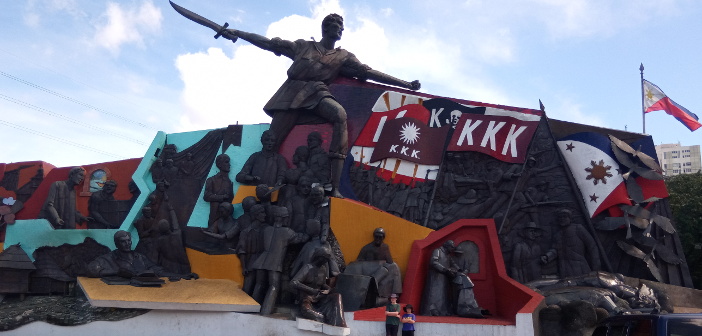After reef diving in Moalboal, and some city walking and unusual sightseeing in Cebu, we headed to Manila for the final leg of our Filipino journey. The capital of the Phillipines is actually a series of nested cities like a Russian doll. A sprawling conurbation of over 20 million people is centered on what’s known as “Metro Manila”, which itself contains the densely populated city proper. And most of the tourist sites are concentrated in the historic district known as Intramuros — literally, “within the [city]walls.”
Here, however, it is impossible to ignore the city’s great tragedy. The former capital of the Spanish empire in Asia, a port which grew rich on trade and spent much of those riches on churches and religious art, a place packed with treasures of painting, statuary, jewelry, and architecture, was occupied by the Japanese during World War Two, and then liberated by a US – Filipino army in a battle so intense that the city was almost entirely leveled. Four hundred years of history was virtually obliterated, and in the final days of the battle, the Japanese troops perpetrated horrific atrocities in the city, the details of which are best kept from children.

The historic Intramuros district of Manila in May 1945. The destruction caused by the battle is hard to comprehend
Intramuros has been sympathetically reconstructed, the old city walls restored. At the north end lies Fort Santiago, once the headquarters of the Spanish garrison in the city. Here too though, even in the sunshine and among the strolling tourists, it’s impossible to escape the shadow of 1945, as hundreds of prisoners were crammed into the ancient dungeons, where they died of hunger or suffocation. You can also walk literally in the footsteps of the hero of Filipino independence, Jose Rizal, as bronze footprints in the ground mark out the path he took to his death before a Spanish firing squad in 1896.
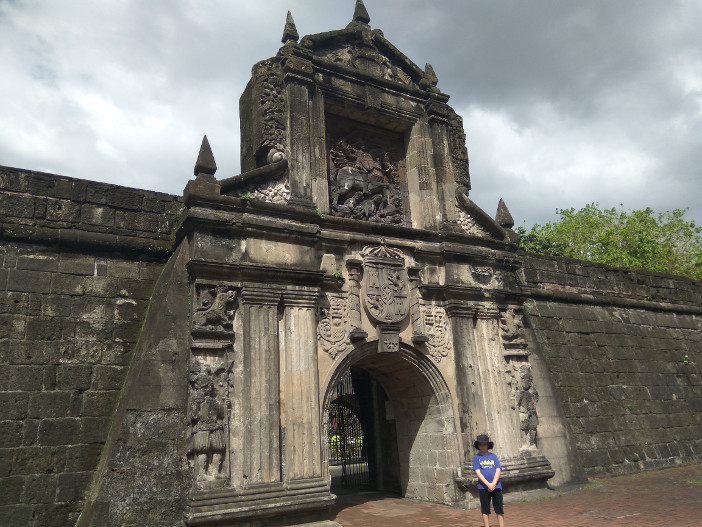
The gate to Fort Santiago
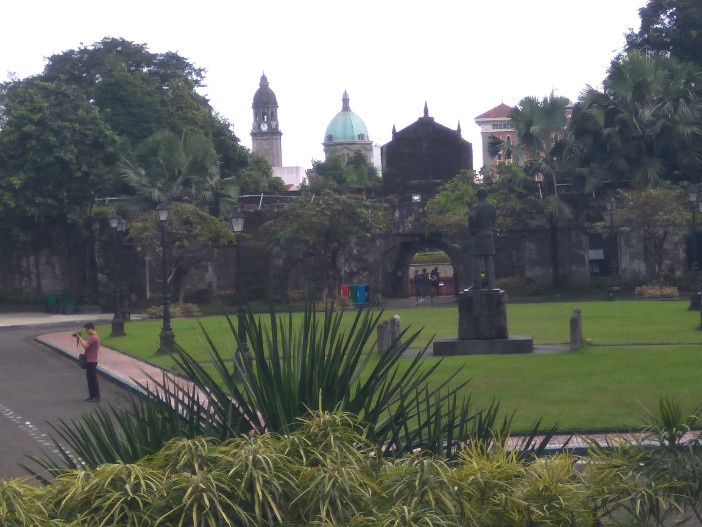
Inside the fort is green and peaceful, but the ghosts of past tragedies are never far away
A more cheerful atmosphere prevails at Casa Manila. This apparently colonial-era house is in fact a modern copy of a genuine mid-19th century building in another location. All its contents are authentic though, and it gives a fascinating glimpse into the life of a wealthy Manila family of the period.
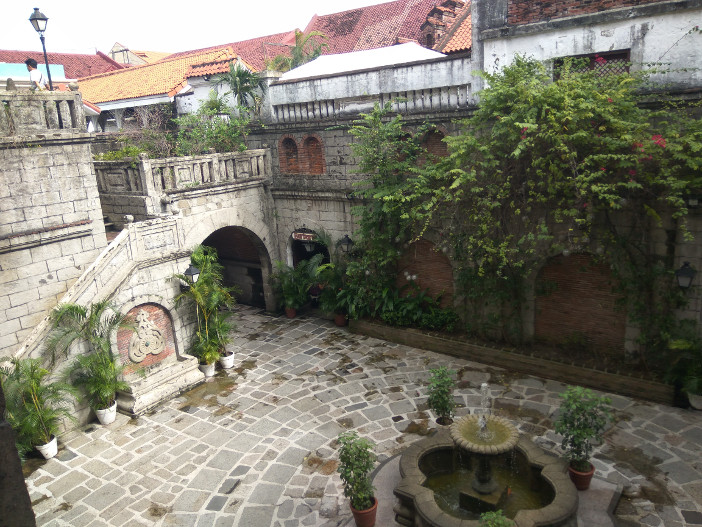
The courtyard of Casa Manila connects it to hotels, restaurants, and arty boutiques
Stern-looking uniformed security staff stand around, guarding the artefacts, but one at least proved to be a charming and knowledgeable guide, who delighted in telling us how ice was brought from Boston, Massachusetts for the ice boxes of the kitchens of Manila.

I have no idea what this was used for
One of the few buildings which survived the battle of 1945 was the San Agustin Church (it can be seen in the top right corner of the picture above.) When we first visited it was closed, but I was glad we returned the next day, as it now contains a museum of religious art, so extensive can only leave you struggling to imagine the riches which the city had to display prior to the looting and destruction of war.
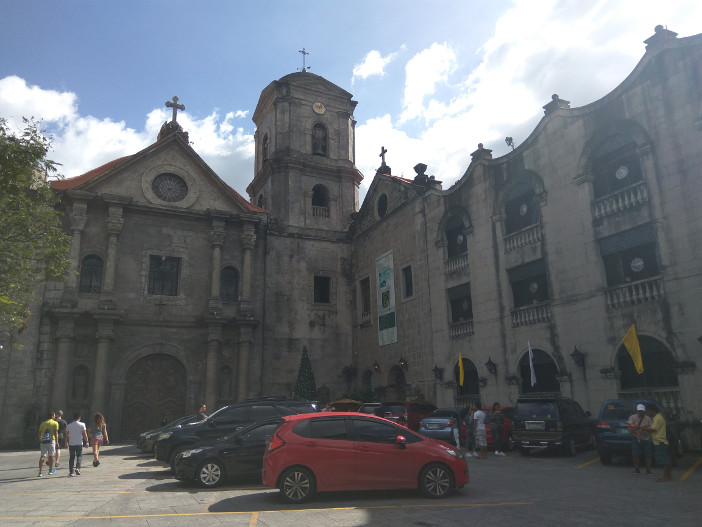
The San Agustin Church is a miraculously preserved building, dating back to 1607

The Philippines has a rich and extraordinary tradition of religious art
A short walk from the walls of Intramuros is the National Museum of Fine Arts. Originally built to house the Philippine legislature during the period of US rule, it now contains treasures of Filipino art from the pre-colonial era to the present day, and demonstrates that, while the tragedies of the past should not be forgotten, Manila continues to reinvent and renew itself into the 21st century.

Naive religious art of the Philippines has a unique charm and style
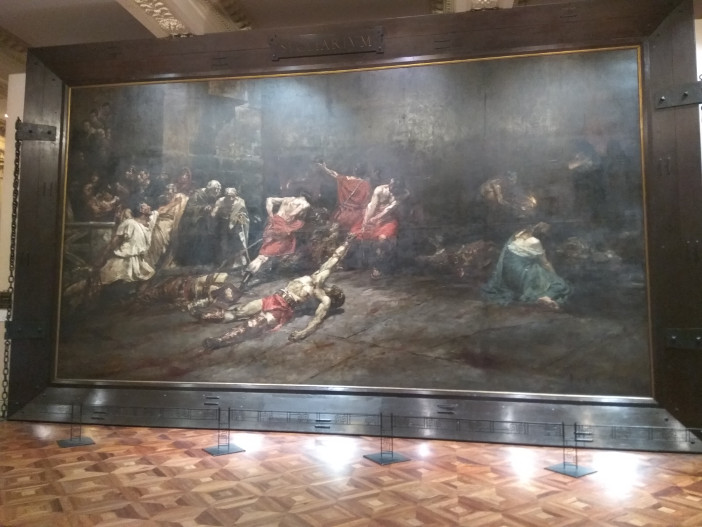
Filipino artists of the 19th century saw themselves within the Spanish tradition, and this huge canvas won a prestigious award in Madrid
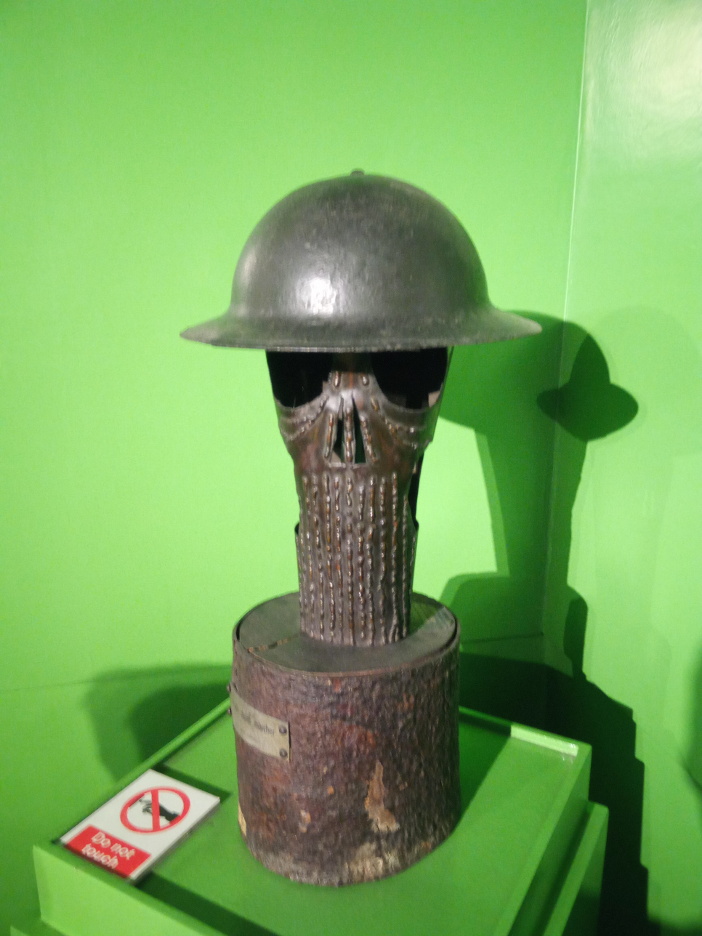
The debris of war repurposed as art

Filipino art continues to evolve and develop, reflecting both western innovations and local traditions
Photos: Andrew Killeen, Karen Killeen (except 1945 photograph- unknown photographer via Wikimedia Commons)

